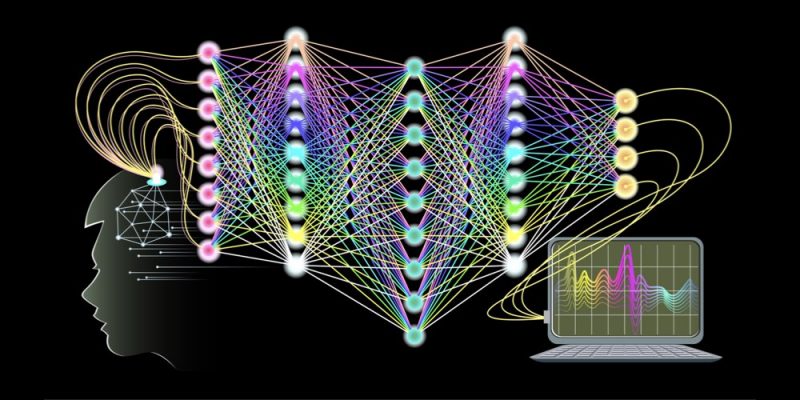Neural Networks: The Building Blocks of Artificial Intelligence
Introduction
Neural Networks, a crucial component of Artificial Intelligence (AI), are mathematical models inspired by the workings of the human brain. These models are designed to process and analyze complex data, recognize patterns, and make decisions similar to how humans do. As the backbone of many AI systems, Neural Networks have revolutionized various industries by enabling machines to learn and adapt from data. In this article, we will delve into the concept of Neural Networks, exploring how they function, their applications, and their potential for the future.
What are Neural Networks?
Neural Networks are mathematical models designed to mimic the structure and function of biological neural networks. These artificial neural networks consist of layers of interconnected nodes, or neurons, which process information and perform computations. Each neuron in the network processes inputs received from the neurons in the previous layer, applies a mathematical operation, and passes the output to the next layer. Neural networks are capable of analyzing data, recognizing patterns, making predictions, and making decisions, similar to the human brain. The strength of the connections between neurons, known as weights, is adjusted during the training process, allowing the network to learn from data and improve its performance over time.
How Do They Work?
Neural networks typically consist of three main types of layers: the input layer, hidden layer(s), and output layer. The input layer receives data from the external world and passes it on to the hidden layers. The hidden layers, which can be one or multiple, process this information to generate intermediate results. These layers apply various mathematical functions to the inputs, transforming them into a format that the output layer can use. The output layer produces the final results based on the processed data, which could be a classification, prediction, or decision.
Learning in neural networks occurs through a process called backpropagation. During training, the network makes predictions based on the input data and compares these predictions to the actual results. The difference between the predicted and actual results, known as the error, is propagated back through the network, adjusting the weights of the connections between neurons. This process continues iteratively, reducing the error and improving the network’s accuracy. The ability of neural networks to learn from data makes them powerful tools for tasks that involve pattern recognition, prediction, and decision-making.

Applications
Neural networks have a wide range of applications across various fields. In image and speech recognition, for example, neural networks are used to identify objects in photos or recognize spoken words in audio files. These applications are crucial in technologies like facial recognition systems and virtual assistants, such as Apple’s Siri and Amazon’s Alexa. In natural language processing, neural networks help machines understand and generate human language, enabling applications like machine translation, sentiment analysis, and chatbots.
In the healthcare sector, neural networks are used for medical diagnosis, where they analyze medical images such as X-rays, MRIs, and CT scans to detect abnormalities and assist doctors in making accurate diagnoses. They also play a role in predicting patient outcomes based on historical data. In the financial industry, neural networks are employed for tasks like stock market prediction, risk assessment, and fraud detection. By analyzing vast amounts of financial data, these networks can identify patterns and trends that are not immediately apparent to human analysts.
Neural networks are also instrumental in the field of robotics, where they enable machines to perceive their environment, make decisions, and perform tasks autonomously. In the automotive industry, for instance, neural networks power autonomous driving technologies, allowing vehicles to navigate complex environments, recognize obstacles, and make real-time decisions to ensure safe driving. Moreover, neural networks are used in smart home systems to enhance security, automate tasks, and improve the overall user experience.
Future Potential
As neural networks continue to evolve, their potential for the future is vast. More complex and specialized neural networks could lead to the development of even more intelligent and efficient AI systems. For instance, advancements in deep learning—a subset of neural networks with multiple hidden layers—are already paving the way for more accurate and sophisticated models capable of handling large and complex datasets. These models can be applied to a wide range of tasks, from personalized medicine to autonomous robots.
The widespread adoption of neural networks across industries could revolutionize existing technologies and pave the way for innovative solutions to complex problems. In the field of healthcare, neural networks could lead to breakthroughs in personalized treatment plans, where AI systems analyze genetic information, medical history, and lifestyle data to recommend the most effective treatments for individual patients. In education, neural networks could personalize learning experiences, adapting educational content to suit the needs and preferences of each student.
Conclusion
Neural Networks are fundamental to the field of Artificial Intelligence, driving innovation and advancements in various domains. By mimicking the workings of the human brain, these mathematical models have proven to be effective in solving complex problems and analyzing data. As neural networks continue to advance, they hold the promise of unlocking new frontiers and shaping the future of technology. The integration of neural networks with other emerging technologies, such as quantum computing and the Internet of Things (IoT), could further expand their capabilities and impact, making them an indispensable tool in the digital age.




